
Roots
There exists a whisper, ancient and persistent, carried on the very strands of our textured hair, a silent language of pigments and practices that stretches back through the dust of forgotten eras. This exploration begins not merely with an examination of color, but with a reverence for the source itself ❉ the deep, living archives held within each coil, kink, and wave. We seek to understand how the ancestral approaches to altering hair’s hue, often born of earthen bounty and intuitive wisdom, continue to shape the contemporary landscape of textured hair care, allowing a fuller appreciation of its enduring lineage.
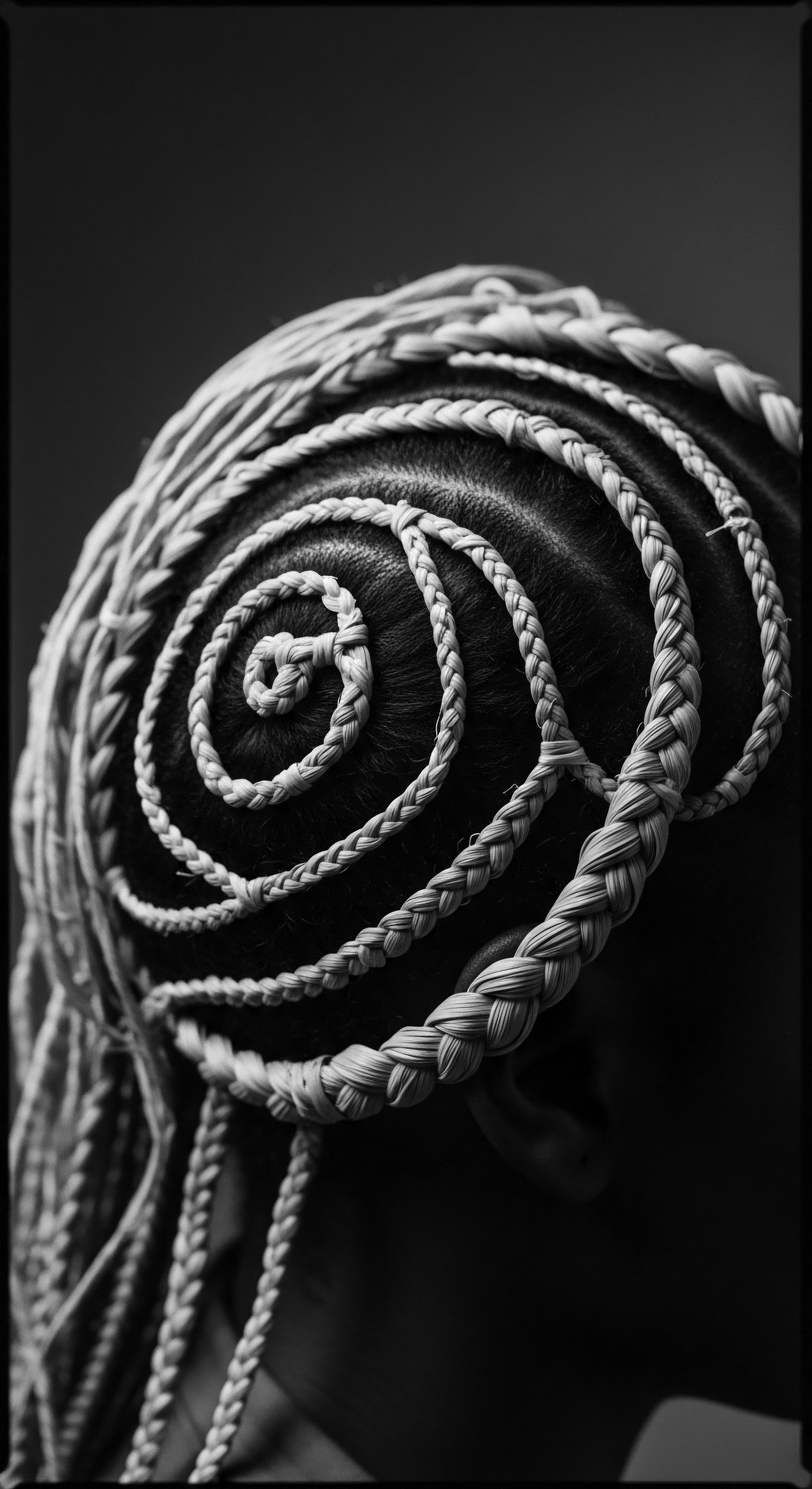
Melanin’s Ancient Canvas
At the heart of hair’s innate color lies melanin, a polymer whose intricate chemical dance dictates the vast spectrum of natural shades we behold. In textured hair, particularly, the distribution and type of melanin—eumelanin for darker tones, pheomelanin for warmer reds and yellows—confer not only visual richness but also intrinsic properties that inform our care. Ancestors, without the benefit of electron microscopes, possessed an intimate understanding of this natural canvas, discerning subtle shifts in hair’s receptivity to color based on its inherent character and even its health. Their practices honored these biological realities, working in concert with the hair’s own rhythm rather than imposing a foreign will upon it.
Consider the very structure of textured hair ❉ its elliptical cross-section, the varied curl patterns, the tendency for cuticles to be more open. These are not mere scientific curiosities; they are markers of an ancient design, influencing how pigments were absorbed, how they adhered, and how they ultimately appeared. Ancient traditions often involved preparations that seemed to intuitively grasp these nuances, using finely ground plant powders or mineral pastes that could gently deposit color, perhaps even offering strengthening properties along the way.
The enduring presence of historical hair coloring traditions in textured hair care speaks to a deep ancestral wisdom regarding the intrinsic nature of hair.

Echoes from the Source ❉ Pigments of the Earth
The palettes of our forebears were drawn directly from the earth and its verdant offerings. Long before synthetic dyes, the roots, leaves, and minerals held the secret to transforming one’s appearance, often with spiritual or social significance. These original coloring rituals were rarely about dramatic, artificial shifts; they were about enhancing, adorning, or signifying through a natural spectrum of shades.
- Henna (Lawsonia inermis) ❉ A cornerstone of traditional hair coloring across North Africa, the Middle East, and parts of Asia, henna offered a range of reddish-brown tones. Its persistence is undeniable, as many today still turn to it for its conditioning properties and warm color, a testament to its longevity and efficacy.
- Indigo (Indigofera tinctoria) ❉ Frequently paired with henna, indigo provided deep blue to black hues. The layering of these two plant powders—a sequential application—allowed for custom color results, a sophisticated understanding of botanical chemistry passed down through generations.
- Red Ochre ❉ In various African communities, perhaps most notably among the Himba people of Namibia, pulverized red ochre mixed with animal fat or butter created a rich, reddish paste. This wasn’t merely a cosmetic application; it was deeply symbolic, signifying beauty, status, and connection to the earth and one’s lineage (Hendricks, 2013). This ritual, passed down through matriarchal lines, embodies a living history of hair adornment and its integral role in identity.
- Walnut Hulls ❉ Throughout parts of Europe and the Mediterranean, the outer hulls of walnuts yielded brown and black dyes. These concoctions, often steeped and applied as rinses, demonstrate a pervasive cross-cultural intuition about natural pigmentation.

Traditional Classifications and Herbal Wisdom
Our ancestors didn’t classify hair with the modern typologies we often use today. Their understanding stemmed from observation, touch, and the hair’s responsiveness to different treatments. This knowledge was often communal, shared within kinship groups and passed from elder to youth. When considering coloring, they didn’t just think of the hue; they considered the plant’s medicinal properties, its association with certain seasons, or its perceived spiritual resonance.
The selection of coloring agents was thus deeply informed by holistic principles. A plant known for its strength-giving properties might be chosen not just for its color, but for its perceived ability to invigorate the hair strand itself. This integrated approach to beauty and wellness stands as a powerful reminder of how our forebears engaged with the natural world. The continuity of these practices, even in a modified form, suggests a deep-seated trust in earth-derived remedies and an intuitive sense of efficacy that modern science often validates.
| Traditional Colorant Henna (Lawsonia inermis) |
| Historical Application/Significance Reddish-brown dye, used for spiritual rituals, status, and adornment across Africa and Asia. Often applied to hair and skin. |
| Modern Persistence in Textured Hair Care Widely used today for natural red/brown shades, conditioning, and strengthening properties. Preferred by many seeking chemical-free options. |
| Underlying Science (Modern Lens) Lawsone molecule binds to keratin, depositing color and thickening the hair shaft, especially beneficial for textured hair cuticles. |
| Traditional Colorant Indigo (Indigofera tinctoria) |
| Historical Application/Significance Blue dye, combined with henna for darker brown to black hues. Used for ritualistic purposes and visual identity. |
| Modern Persistence in Textured Hair Care Frequently used alongside henna for black or deep brown shades in natural hair coloring. |
| Underlying Science (Modern Lens) Indigotin molecule provides blue pigment; when combined with henna, it creates a range of brown to black by layering. |
| Traditional Colorant Red Ochre (Hematite clay) |
| Historical Application/Significance Deep red pigment mixed with fats, used for adornment, sun protection, and symbolizing beauty/status, notably by Himba women. |
| Modern Persistence in Textured Hair Care Less common as a direct hair dye, but conceptual persistence in protective clay washes and scalp treatments for mineral benefits. |
| Underlying Science (Modern Lens) Iron oxides provide the red hue; the clay also offers mineral absorption and scalp cleansing properties. |
| Traditional Colorant These ancestral practices reveal a profound connection between the earth's bounty and personal adornment, a heritage that continues to shape contemporary textured hair care choices. |

Ritual
The act of coloring hair, in ancestral contexts, transcended mere aesthetic modification. It was, and in many ways remains, a ritual—a deliberate sequence of actions imbued with meaning, often communal, and deeply connected to well-being and identity. These historical rituals offer a profound lens through which to observe the persistence of traditional practices in modern textured hair care, extending far beyond the application of pigment itself.

The Communal Thread of Care
In countless pre-colonial African societies and across the diaspora, hair care was a collective endeavor. Grandmothers, mothers, aunts, and sisters gathered, their hands working in concert to cleanse, style, and adorn hair. Coloring, when undertaken, was often part of these intimate gatherings, transforming the act into a shared experience of bonding and knowledge transfer. The preparation of the coloring agents—grinding herbs, mixing clays—could be a lengthy, meditative process, involving the sharing of stories, songs, and wisdom.
This communal aspect, the ‘tender thread’ of care, lives on in modern textured hair communities. Consider the shared experiences on social media platforms, the ‘wash day’ routines shared among friends, or the rise of natural hair salons that serve as cultural hubs. While the physical proximity may differ, the desire for shared knowledge, affirmation, and connection around hair remains a powerful legacy of these ancient rituals.
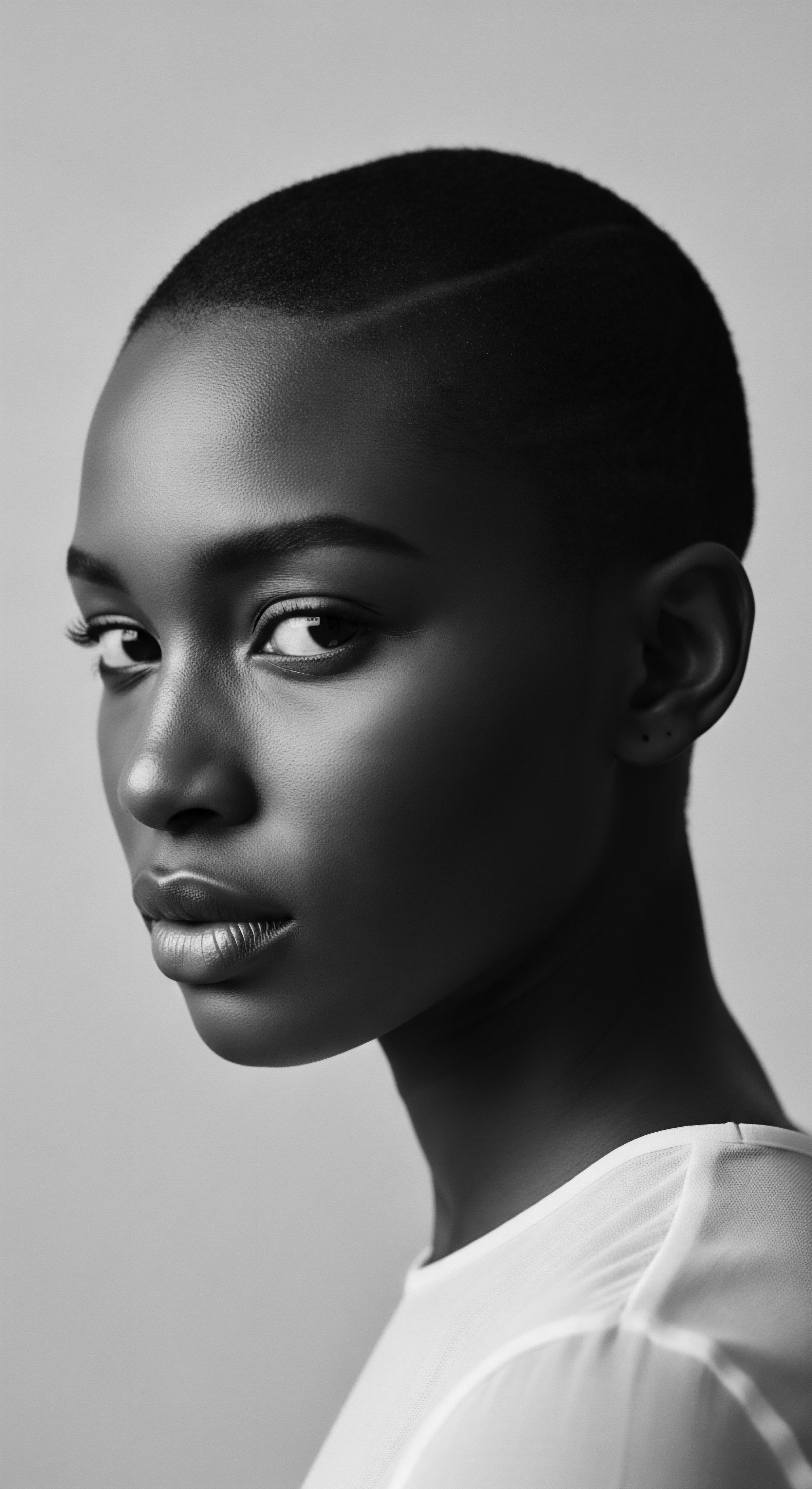
Techniques and Tools ❉ A Heritage of Hands
The methods of application were often meticulous and patient, a stark contrast to the rapid-fire chemical processes of industrial coloring. Historical coloring rituals persisted through techniques that honored the hair’s unique structure. Ancestors used their hands, smooth stones, wooden spatulas, or fashioned brushes from natural fibers to apply dyes and pastes. These tools, simple yet effective, were extensions of human ingenuity, allowing for precise application that respected the hair’s natural curl pattern and porosity.
The techniques employed often mirrored those used for traditional hair styling. For instance, the systematic sectioning of hair for braiding or twisting was also applied when distributing coloring mixtures, ensuring even saturation and minimal waste. The practice of gentle detangling prior to application, using natural oils or water-based preparations, was as essential then as it is now. These preparatory steps, learned through observation and practice, highlight a deep understanding of hair manipulation that predates modern cosmetology schools.
The enduring appeal of natural colorants and gentle application methods speaks to a subconscious cultural memory of ancestral care practices.

How Do Historical Preservation Techniques Inform Modern Coloring?
Many traditional hair coloring ingredients also served as conditioning agents or scalp treatments. The very process of coloring was often a multi-purpose act. For example, henna, beyond its red tint, is known to coat the hair shaft, making it appear thicker and stronger. This was not a secondary benefit but an inherent part of the ritual.
Similarly, certain clays or herbal rinses used for color might simultaneously cleanse the scalp, reduce irritation, or impart shine. This holistic approach, where coloring is intertwined with overall hair health and preservation, directly informs the modern natural hair movement’s emphasis on ‘low manipulation’ and ‘product ingredient awareness’. Many textured hair individuals today seek coloring options that are less damaging and contribute positively to hair integrity, a direct echo of ancestral priorities.
The practice of leaving colorants on for extended periods, often overnight, was also common. This wasn’t merely to deepen the hue; it allowed the botanical ingredients to impart their full spectrum of benefits—conditioning, strengthening, and even scalp stimulation. The covering of hair during this period, using cloths or leaves, anticipated the modern use of plastic caps or bonnets to create a warm, moist environment conducive to product absorption.

Adornment and Identity ❉ More Than Just Color
The choice of hair color, and the rituals surrounding its application, were rarely arbitrary. They were often tied to significant life events, social status, marital standing, or spiritual beliefs. A change in hair color might signify a transition from childhood to adulthood, a period of mourning, or a celebration. The application of red ochre by Himba women, for instance, serves as a potent visual marker of their cultural identity, age, and social standing within their community.
The distinctive red hue is not merely decorative; it’s a living symbol of their ancestral traditions and connection to their environment (Hendricks, 2013). This profound link between hair adornment and personal narrative persists. Individuals with textured hair often use color—whether traditional or vibrant modern shades—to express individuality, celebrate heritage, or reclaim narratives around beauty, embodying a modern form of ancestral self-expression.
The vibrant hair colors seen in many contemporary textured hair communities, from deep blues to fiery reds, while seemingly modern, can be seen as a continuation of this ancestral drive for self-expression and visible identity. The tools might have changed, but the underlying impulse to use hair as a canvas for cultural and personal statements remains a powerful link to the past.
| Ancestral Ritual Element Communal Preparation |
| Historical Significance Knowledge transfer, social bonding, shared cultural identity. |
| Persistence in Modern Textured Hair Care Online hair communities, natural hair meetups, salon as community hub. |
| Ancestral Ritual Element Holistic Ingredient Selection |
| Historical Significance Hair health, medicinal properties, spiritual connection to earth. |
| Persistence in Modern Textured Hair Care Demand for natural, organic, and plant-based hair products; focus on 'clean beauty.' |
| Ancestral Ritual Element Gentle Application Techniques |
| Historical Significance Respect for hair structure, meticulous care, slow process. |
| Persistence in Modern Textured Hair Care Low manipulation methods, detangling routines, mindful product application. |
| Ancestral Ritual Element Symbolic Color Choice |
| Historical Significance Status, age, life transitions, spiritual beliefs, tribal affiliation. |
| Persistence in Modern Textured Hair Care Hair color as personal expression, reclamation of beauty narratives, celebrating cultural identity. |
| Ancestral Ritual Element The ceremonial nature of ancient hair coloring continues to shape contemporary practices, grounding them in a legacy of shared care and purposeful adornment. |
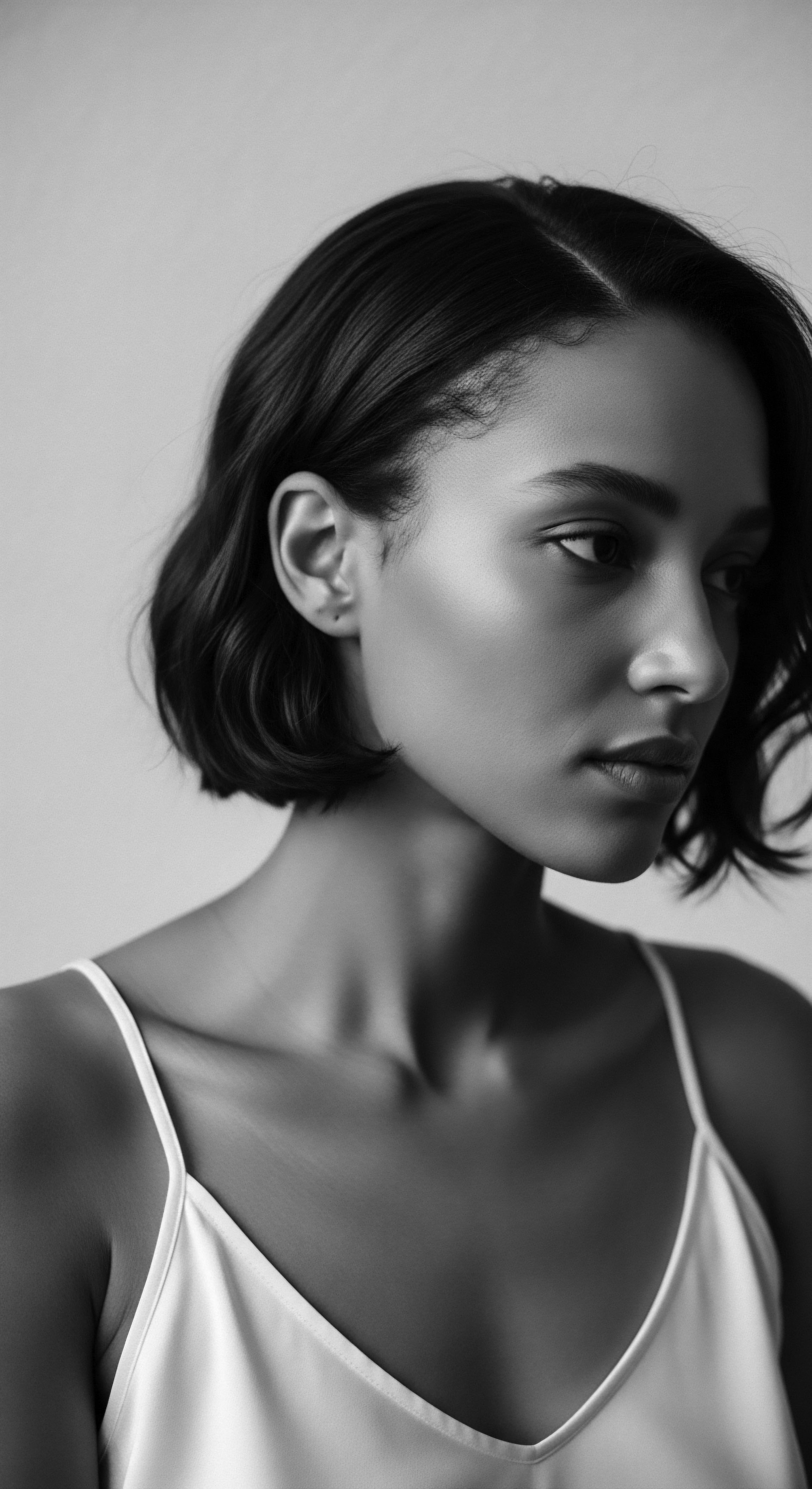
Relay
The journey from ancestral hair coloring rituals to contemporary textured hair care is not a linear path of replacement but rather a dynamic relay, a passing of the torch where ancient wisdom continues to illuminate modern practices. This segment delves into the intricate ways historical understanding and applications of color—often for embellishment and well-being—are reinterpreted, validated, and sometimes unknowingly replicated within today’s hair care landscape, particularly for textured hair. It demonstrates a profound connection between scientific observation and inherited practical knowledge.

Validation Through Science ❉ The Legacy of Botanicals
Many of the botanical ingredients used in ancestral hair coloring—plant materials like henna, indigo, amla, and hibiscus—are now widely recognized in scientific literature for their beneficial properties beyond simple pigmentation. Modern chemistry has unraveled the molecular structures responsible for these effects, offering a scientific lens to what our ancestors understood intuitively. For instance, the lawsone molecule in henna, responsible for its reddish hue, also binds to the keratin in hair, which can fortify the strand and contribute to its structural integrity (Choudhury et al.
2012). This corroborates the long-held traditional belief that henna not only colored but also strengthened hair.
Another compelling example lies in the use of traditional plant-based rinses or masks that might subtly alter hair tone over time. Amla (Indian gooseberry), used across South Asia and for its historical connections to hair health in the diaspora, is rich in Vitamin C and antioxidants. While not a dramatic dye, its consistent application can contribute to darker, richer hair tones and improve overall hair vitality (Suryawanshi, 2020). These are not simply ‘old wives’ tales’; they are centuries of empirical observation, now supported by biochemical analysis, showing a remarkable convergence between inherited lore and scientific understanding of hair biology and its interaction with natural compounds.
The sophisticated interplay of historical empirical observation and modern scientific validation underscores the enduring power of ancestral hair care wisdom.

How Do Modern Formulations Channel Ancient Principles?
Modern hair coloring products aimed at textured hair, particularly those in the ‘natural’ or ‘semi-permanent’ categories, often draw directly from these ancient wells of knowledge. Rather than stripping hair of its natural pigments with harsh chemicals, many contemporary formulations for textured hair prioritize a gentler approach. They often utilize direct dye molecules or plant-derived pigments that deposit color onto the hair’s surface or within the cuticle, rather than penetrating the cortex and altering the hair’s internal structure.
This mirrors the action of traditional plant dyes like henna and indigo, which also work by staining or coating the hair, preserving its integrity. This gentle approach is particularly valued for textured hair, which can be more susceptible to damage from aggressive chemical treatments due to its unique structural characteristics and the path of its cuticle.
Furthermore, the contemporary movement towards ‘hair wellness’ and ‘scalp health’ within textured hair care echoes the holistic philosophies of ancestral practices. Many ancient coloring rituals incorporated ingredients that nourished the scalp and hair follicle, understanding that true beauty radiated from health. Modern formulations often include botanical extracts, essential oils, and gentle cleansers that reflect this traditional emphasis on foundational health as the precursor to vibrant hair.

The Art of Pigment Layering and Tonal Depth
Ancestral practitioners of hair coloring understood the nuanced art of layering pigments to achieve desired tonal effects. The sequential application of henna followed by indigo, for instance, allowed for a spectrum of browns and blacks, depending on the concentration and application time. This understanding of sequential deposition and its impact on final color is a sophisticated technique that finds its contemporary parallel in professional color theory for textured hair.
Stylists today blend multiple shades, utilize varying application techniques (e.g. balayage, ombre) that build color gradually, and consider the hair’s natural undertones—a complex interplay of the hair’s inherent melanin—to achieve rich, multidimensional results.
This attention to layering and tonal depth in textured hair coloring is a direct inheritance. It allows for the expression of personal style while often complementing the hair’s natural characteristics, much like how ancestral adornments enhanced rather than obscured the inherent beauty of the wearer. The continuity of this artistic approach is evident in how many choose to enhance their natural color with subtle, warm hues, or to create striking, visible color transformations that still respect the hair’s texture.
The contemporary popularity of ‘natural’ hair color products, often utilizing plant-based dyes or low-peroxide formulas, signifies a widespread intuitive return to ancestral methods. These products aim to minimize damage while providing rich color, a balance that traditional methods mastered centuries ago. The wisdom encoded in ancient practices, passed down through generations, has found its contemporary scientific articulation, proving that the old ways often hold truths that modern understanding only now fully apprehends.
Consider the practice of using clays for coloring or clarifying textured hair. Various mineral-rich clays, such as bentonite or rhassoul, have been used in African and Middle Eastern traditions for centuries for both skin and hair care. While not primary dyes, they can subtly alter hair tone, particularly lightened hair, by absorbing impurities and depositing minerals, leading to a duller or richer hue. Their persistence in modern hair detoxes and conditioning treatments for textured hair underscores an ancestral recognition of their purifying and mineral-depositing properties, which indirectly affect hair appearance and health.
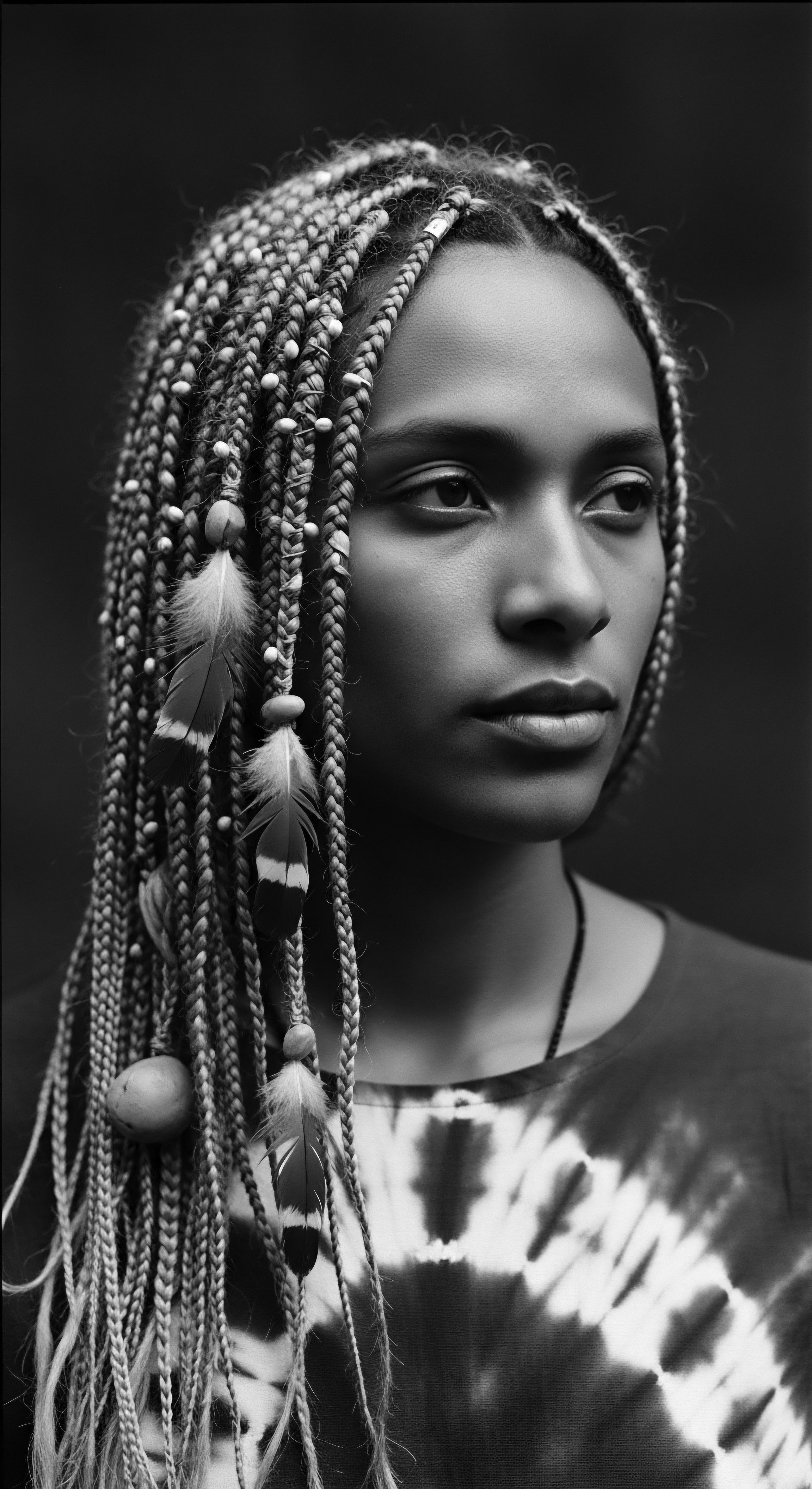
Preserving Lineage ❉ The Role of Community and Education
The persistence of these rituals is also ensured by the vibrant community surrounding textured hair. Online platforms, natural hair expos, and specialized salons serve as contemporary equivalents of ancestral gatherings where knowledge was exchanged. Here, techniques for applying natural dyes, understanding ingredient synergies, and maintaining hair health are shared and refined. This collective learning environment ensures that the wisdom, though perhaps re-packaged or re-articulated through a scientific lens, continues to be passed down.
Furthermore, the current generation is actively researching and reconnecting with historical practices, seeking to restore what was lost or undervalued due to colonial influences or assimilation pressures. This intentional retrieval of ancestral knowledge is a powerful act of heritage preservation, ensuring the relay of wisdom continues, not just by unconscious persistence but by conscious revival. The narrative here becomes one of reclaiming and celebrating a deep, rich heritage, where every strand carries a story of continuity and resilience.
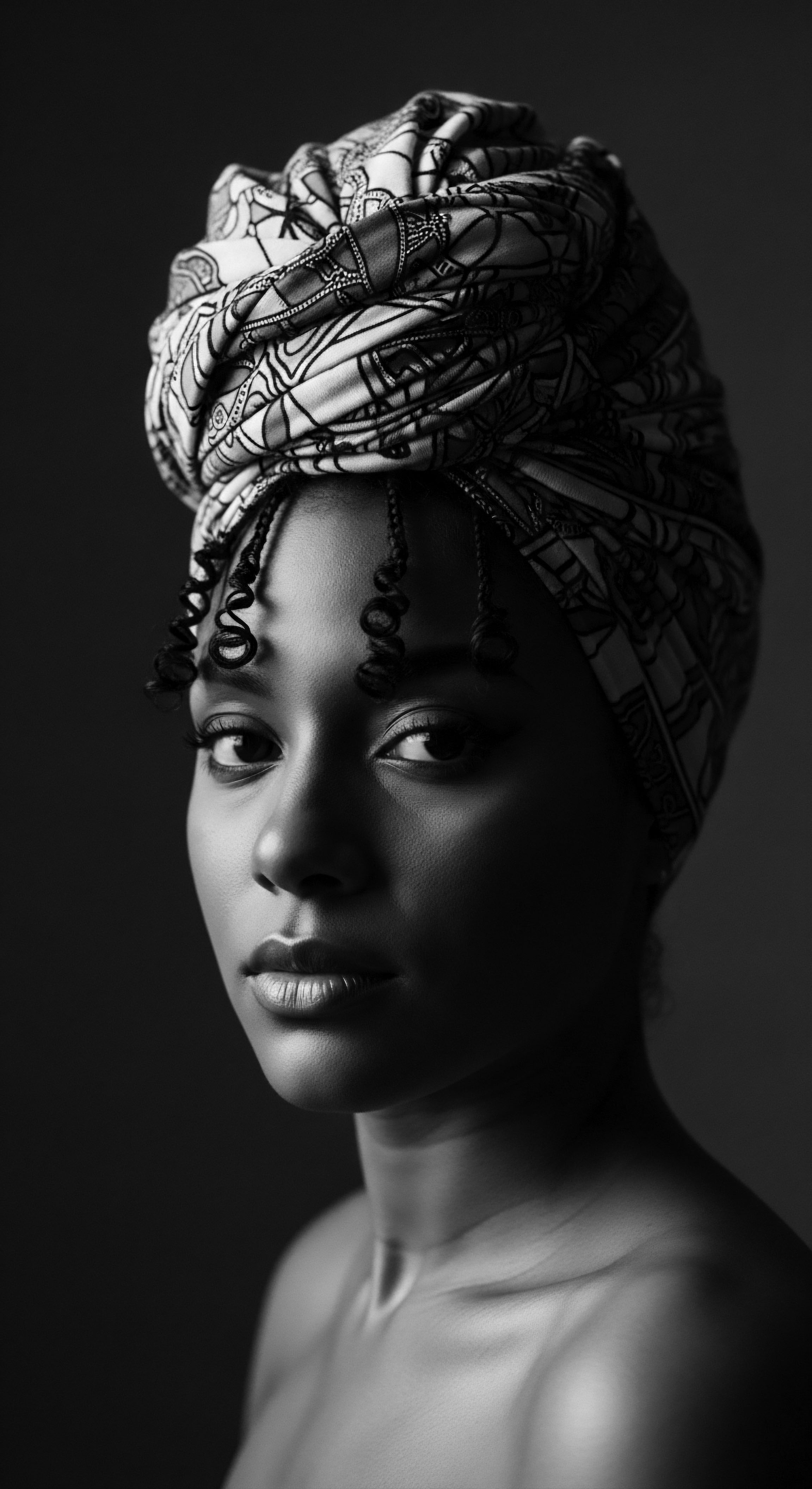
Reflection
To truly comprehend how historical hair coloring rituals persist in textured hair care is to stand at the nexus of time, gazing backward through the mists of ancestral memory while firmly rooted in the present. It becomes evident that our contemporary practices are not isolated phenomena; they are living echoes, vibrant vibrations from a deep past. Each conscious choice to use a plant-based dye, each mindful scalp treatment, each gentle application technique, carries the resonance of hands that worked with the earth’s bounty centuries ago.
This enduring connection speaks to a profound truth ❉ textured hair is more than just protein filaments. It is a profound meditation on heritage itself, a living, breathing archive of ancestral wisdom, resilience, and artistry. The story of hair coloring, from the earthy ochre and indigo of ancient rituals to the nuanced botanical blends of today, traces a continuous line through generations.
It is a story told not just in written texts but in the very fiber of our beings, in the choices we make for our crowns, honoring a legacy that shapes not only our external presentation but also our internal sense of self and belonging. The ‘Soul of a Strand,’ then, is an eternal flicker, illuminated by the wisdom of those who came before, perpetually inspiring the beauty and care we cultivate today and for all tomorrows.
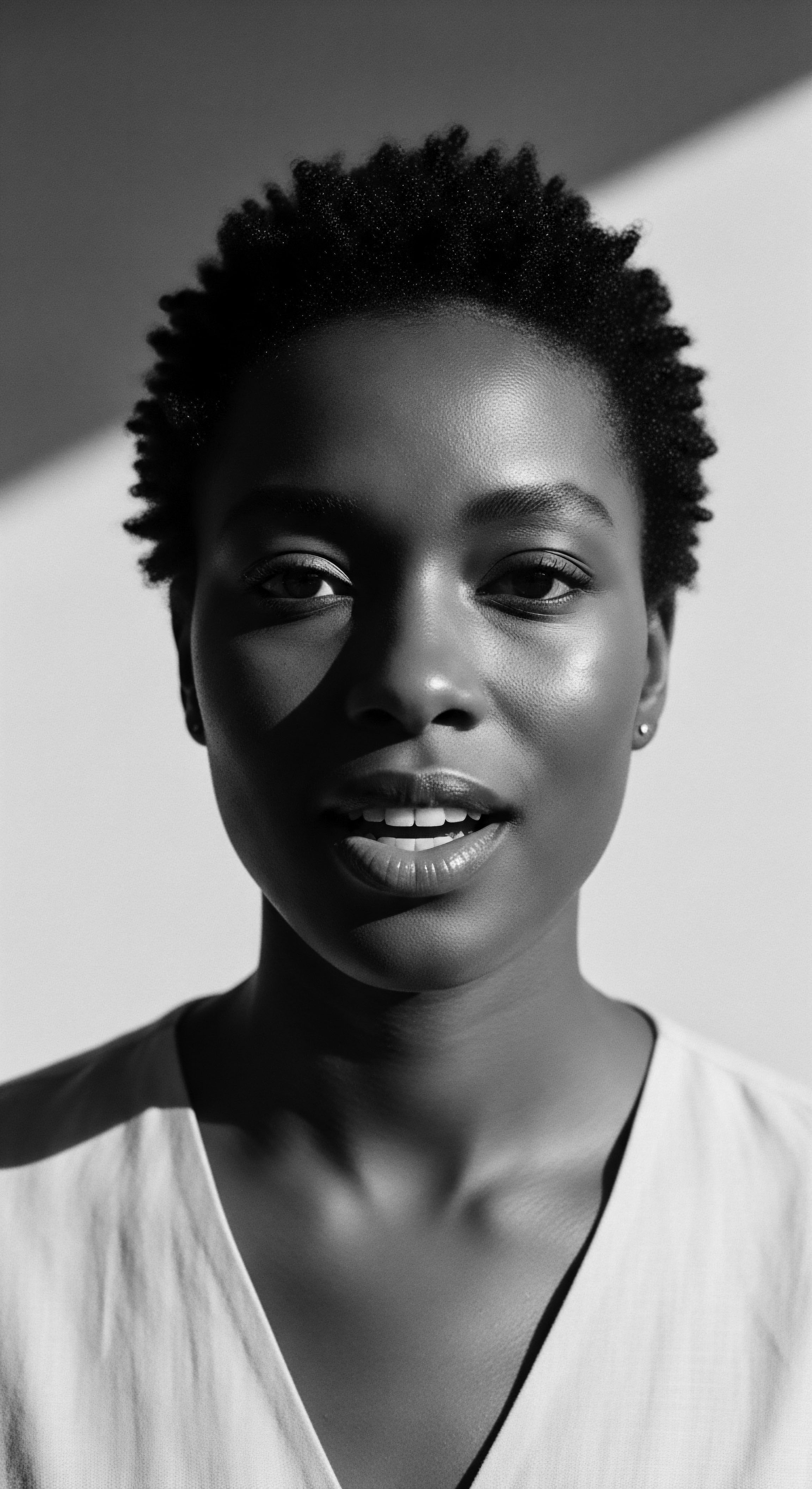
References
- Choudhury, N. et al. (2012). “Henna ❉ A Promising Herb for Hair Care.” International Journal of Research in Pharmacy and Chemistry, 2(2), 221-228.
- Hendricks, F. (2013). The Himba of Namibia ❉ Their History, Culture, and the Dynamics of Change. University of Namibia Press.
- Suryawanshi, S. (2020). “A Review on Hair Care Products Containing Herbal Constituents.” Journal of Pharmacognosy and Phytochemistry, 9(3), 1121-1127.
- Goody, J. (1995). The Culture of Flowers. Cambridge University Press.
- Opoku, K. (1978). West African Traditional Religion. FEP International Private Ltd.
- Eicher, J. B. & Erekosima, T. V. (1995). African Dress ❉ From the National Museum of African Art. Smithsonian Institution Press.
- Robbins, C. R. (2012). Chemical and Physical Behavior of Human Hair. Springer.
